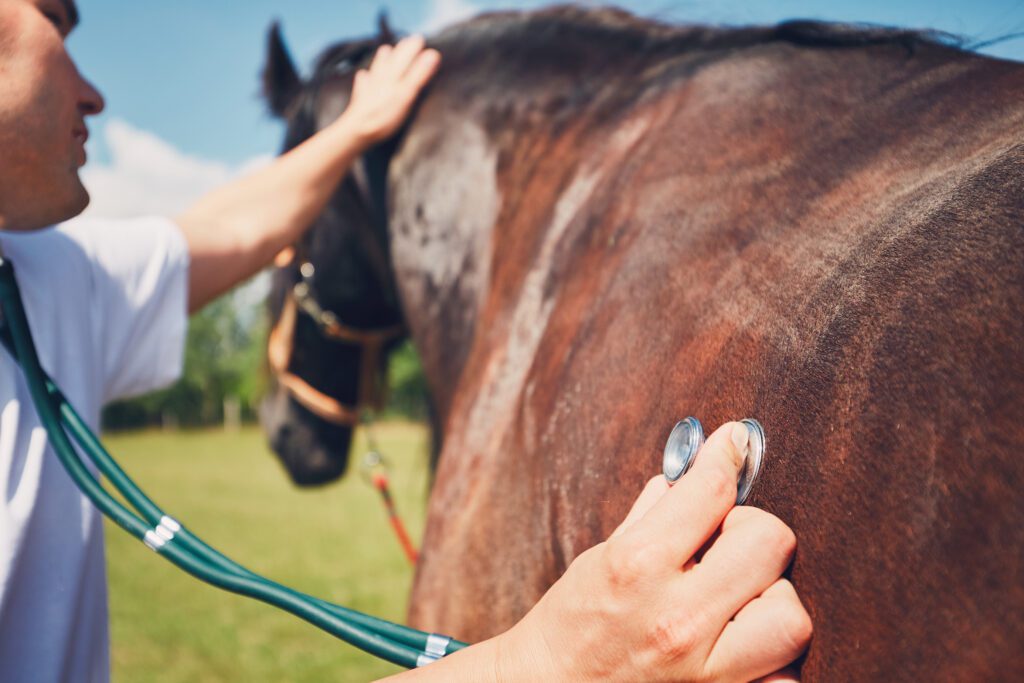Veterinary Crisis Looms With Shortage of Equine Specialists
by TERESA SCHIFFER
A crisis is brewing in the world of veterinary medicine. While there are plenty of students graduating from veterinary college and entering the workforce, most of those bright-eyed new vets are heading into small-animal practice, leaving a significant shortfall of equine specialists to treat horses and other large animals.
In fact, according to the American Association of Equine Practitioners, only 1.3 percent of the nation’s approximately 3,200 new graduates from veterinary college each year go into the field of equine medicine. Half of those dozens of new horse doctors last fewer than five years in that field, with many subsequently moving toward working in small-animal clinics.
Following the Money
The AAEP has been researching the causes behind this reluctance of new practitioners to enter and stay in the field of equine medicine, and they’ve pinpointed some of the major issues. Not surprisingly, one of the biggest factors is money— specifically, the debt to income ratio of veterinary graduates entering the field.
With the corporatization of many small-animal clinics in recent years, veterinary graduates have been quick to pick up on the fact that there is significantly higher income potential available working in that setting than in the world of large animal care. Vet graduates enter the working world with an average of $200,000 in student debt, prompting the vast majority to opt for a position that will provide them with sufficient income to manage that debt right away, and that means going corporate with an established small-animal clinic.
Equine vets who have been around for a while are sympathetic to the choices faced by newcomers to veterinary practice. Dr. Liz Steele of Steele Equine Veterinary Services and Performance Horse Center in Zolfo Springs mentions another factor that she says dissuades graduates from going into horse care.
“These younger generations are a little more astute to work-life balance,” she says. “I’ll be honest, a lot of large animal veterinarians have a hard job with longer hours and emergency on-call, so work-life balance is a bit of a challenge.”
Since horses and other large animals cannot easily be transported to an available clinic in the event of a medical emergency, most equine vets spend significant portions of their time on call and available to their clients and patients.
“You have to go to the horse for the emergency,” explains Dr. Katie Hennessy, owner of Polk Equine Large Animal Veterinary Services, which serves Lake Wales and surrounding communities. “There are a couple of emergency clinics in Brandon or Ocala, but you have to travel, and sometimes if you have an emergency you can’t get the horse on the trailer. So logistics can be more of an issue with the larger animals than with the small.”
This results in long hours, many late night emergency calls, and a lot of time spent away from their own families and homes. Their workload has been further increased in recent years by the inability to bring sufficient numbers of new large-animal doctors into the profession.
What Is the Solution?
Solutions, however, remain elusive at this time. It’s clear that some changes need to take place in order to continue providing adequate care services to the population of horse owners, but how exactly to attract and retain equine vets without following suit and corporatizing the industry in the same manner as other veterinary clinics has yet to be determined.
“We don’t want veterinary medicine to model human medicine,” Steele explains. “We want to keep it private, with individual relationships and not corporatize the veterinary field. I think that, as an association, we’re going to have to formulate something to incentivize private practice.”
Money is a strong motivating factor when it comes to career decisions. An increase in the starting salaries of equine vets could be necessary for the profession to survive. That would mean passing along those costs to clients, however, which may not be as welcome as it is unavoidable.
Another hurdle to overcome is that of the work-life balance. Small-animal clinics tend to have regular business hours, leaving the employed veterinarians with ample free time to enjoy pursuing personal interests and family matters. Convincing young vets to go into equine medicine may require a strategy relying on selectively targeting suitable candidates.
“I think that recruiting kids that have grown up in rural environments where large animals and agriculture is a way of life for them is important, and those may not be the 4.0 [GPA] students,” Steele speculates. “Figure out a way to recruit the youth that has those industries running in their blood and in their families, and it’s a way of life that they understand from early childhood is important. Those are the types of kids that have grown up knowing that hard work has to exist if you’re going to be in the agricultural industry.”

